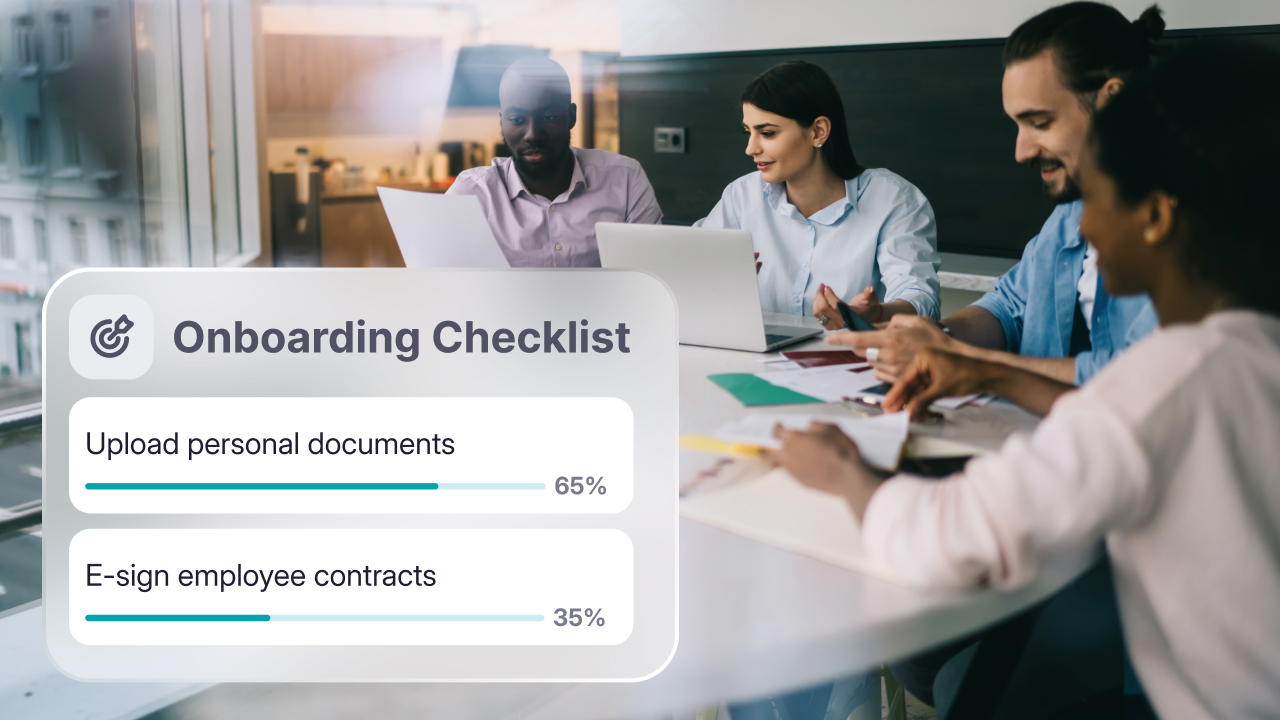Humans are hardwired to desire connection; research proves that interpersonal relationships significantly impact our mental and physical health. Good employee relations mean people within a business feel more connected to each other and the company and are widely understood to lead to better employee engagement, lower staff turnover and employee complaints and higher productivity.
Put another way, employees with a good relationship with their company feel understood and valued, making them happier and more motivated to do their best work. Research by Gallup in 2012 backs this up: companies scoring in the top quartile on employee satisfaction and engagement outperformed those in the lowest quartile by 21% in productivity. Developing and maintaining positive employee relations is, therefore, key to building a thriving organisation.
In this guide, we’ll go through what employee relations are, examples of good employee relations and how you can maintain positive relationships with your employees to improve staff well being, increase employee retention and help achieve your company’s mission.
What are Employee Relations?
Employee relations refers to the relationship between employers and employees. While it covers the collective relationships between you, the employer, and your team, it also covers much more, including:
- Employee safety and working conditions
- Pay and benefits
- Incentives, recognition and rewards
- Work-life balance
- Conflict management
Maintaining positive employee relations will improve employee morale and foster mutual respect between management and other team members. You’ll probably see an improvement in relationships between your employees, which can increase satisfaction by as much as 50%.
Examples of Employee Relations
Employee relations can be made up of positive and negative interactions and cause your HR department to be proactive and reactive. Employee relations take many forms, but here are just a few examples of employee relations to be aware of:
Employee onboarding
Onboarding is the perfect way to build positive relationships with new team members. Give new employees a great first impression of your organisation by giving them all the tools they need to be successful in their roles.
Make sure your employee handbook contains your organisation’s values and how you like to manage individual relationships as well as collective ones. You should keep an open dialogue with your new starters from the very beginning so they know who to turn to for support and how to raise any issues they may face.
Workplace conflict resolution

Workplace conflict is a common employee relations issue. According to The Myers-Briggs Company, managers spend more than 4 hours a week managing conflict in the workplace, but nearly 1 in 4 employees think their managers handle it poorly.
Disgruntled employees can quickly spread their negativity through a business. Make sure you take employee misconduct seriously and conduct workplace investigations when needed to demonstrate your commitment to providing a safe and healthy company culture.
Performance issues
It’s important to keep on top of employee performance. While it can be easy to focus on the employee who isn’t meeting their job role’s expectations, it’s important to remember the impact that poor performance can have on the wider team.
Prioritise resolving issues with underperforming employees quickly to maintain a positive relationship with both the individual in question and their peers.
Leadership issues
The long-term success of employee relations will come from leadership. If your line managers have poor employee relations with their teams, it won’t be long before it spreads through the organisation.
Look for these common leadership issues in your workplace:
- Staff not respecting management
- Employees not trusting what the leadership team say
- Leaders not being open or approachable
Workplace health and safety
It’s crucial to get health and safety procedures right from a legal point of view as well as an employee relations standpoint. If an accident happens in the workplace, you could be held liable, costing thousands in legal expenses and compensation claims. Promote and address safety issues to keep your teams safe.
Benefits of Improving Employee Relations
Increased employee engagement: When you communicate with your teams and prioritise employee voice, they’ll feel more connected and invested in your company’s mission.
Positive company culture: Good workplace communication and culture can boost productivity – by as much as 13%. A positive culture also helps you attract talent as well as retain it.
Better employee retention: Staff sticking around for longer will reward your employee relations efforts. If your employees have positive relationships with managers and peers, they’re likelier to stay at their jobs.
6 Ways to Strengthen Employee Relations
1. Create a clear employee relations policy
Good employee relations policies include your values and rules and guidance for addressing employee issues. It’s useful to have different sections for collective relationships and individual relationships and you may want to consider having an employee relations manager if you’re part of a larger organisation.
2. Make employee experience a priority
Improve your employee relationships by finding out what motivates them, how satisfied they are in their jobs and what their career progression expectations are. You could ask employee relations managers to speak with employees one-on-one to understand their experience.
3. Break down barriers between the leadership team and staff
Empower your management team to be approachable and accessible to their staff. Employee engagement will increase if they feel like the senior figures of the business care about their contribution to the company’s performance and listen to what they have to say.
4. Provide training and development
This is particularly important if you’ve noticed that some managers are lacking employee relations skills. Ensure your leaders are up to scratch so they know how to deal with employee issues. But don’t forget the wider team – providing training and development opportunities for your teams will improve employee satisfaction.
5. Prioritise effective communication

Make sure you prioritise open and honest communication between management and staff. Schedule monthly meetings reporting on business growth and activity to create engaged employees and deal with any problems quickly before employees feel ignored or undervalued.
6. Celebrate achievements
Employee recognition is a huge part of company culture. Don’t wait for performance reviews to shout about someone’s achievements – recognise them publicly to show how much their contribution is valued and demonstrate that good work is rewarded.
Tips for Repairing Difficult Professional Relationships
Inevitably, there will be issues in working relationships or conflicts that need resolving. HR professionals involved in employment relationships or talent management may need to facilitate meetings to repair complex relationships between two employees and resolve disputes between themselves, line managers and other employees. Acting as a role model for approaching these difficult situations is an essential and often undervalued aspect of working within HR.
Here are some reminders about how to handle relational and workplace conflicts within the workplace:
- Have a conflict resolution policy.
- Ensure there is a meeting to discuss the issue, ideally held in person and with a clear agenda and guidelines for how to behave.
- Encourage both sides to listen to the other perspective and acknowledge their parts.
- Identify the positives in the working relationship and any existing shared goals.
- Find mutually beneficial goals to aim for together in the future.
- Facilitate agreement between all parties on the next steps for how to move on.
- Provide counselling support if required.
FAQs
Is Employee Relations Part of HR?
Yes, HR and employee relations go hand-in-hand, but they do have different functions. While HR covers all aspects of the employee lifecycle, such as recruitment, compensation, training and benefits, employee relations professionals will specifically manage the employment relationship between individuals and the organisation.
If you’re a larger company with an employee relations department, those professionals will deal with anything concerned with the employee relations process, including:
- Guidance and advice to managers and employees
- Resolving employee relations issues
- Developing and implementing policies and procedures
- Ensuring compliance with employment laws
How do you Measure Employee Relations?
It’s pretty simple to measure how your employee relations strategy is working. You’re probably already measuring the following KPIs:
- Employee net promoter score (eNPS)
- Labour turnover rate
- Retention rate
- Dispute resolution rate
- Diversity and inclusion metrics
You’ll find that you’ll get a good idea of employee engagement when you track these KPIs, which will, in turn, show you where your employee relations plan has worked and where you need to take action.
Managing employee relations doesn’t have to be difficult. Ensure you have a comprehensive employee relations strategy in place, and consider having a dedicated employee relations manager to help you improve and maintain employee satisfaction in your organisation.



